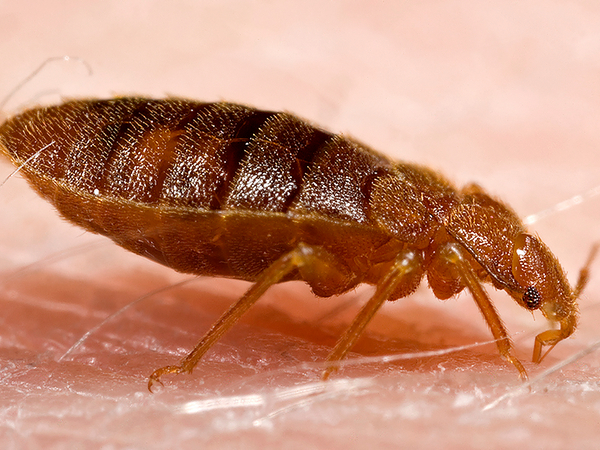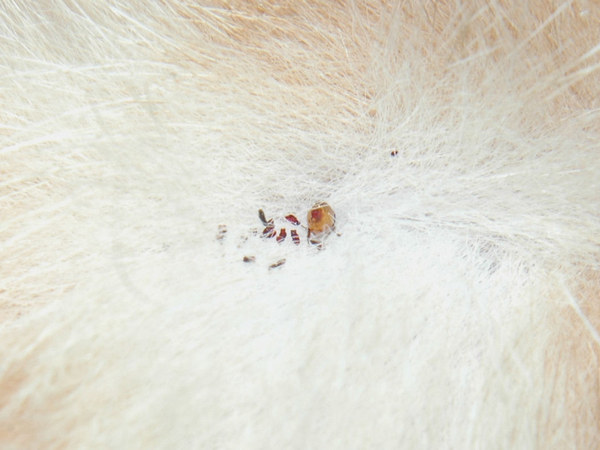How to get rid of fleas on dogs
The best way to tackle a flea infestation on a dog is to start with a thorough check to confirm their presence, then move on to treatment and prevention. This includes giving your dog regular baths with flea-control shampoos, applying vet-recommended flea treatments, and keeping your home clean. Regular grooming and using a flea comb can also make a difference. This guide will walk you through these methods step-by-step, helping you clear up any infestations to keep your dog flea-free.
What are the best methods to get rid of fleas on dogs?
First, you need to make sure that fleas are the actual culprits. Look for signs like flea dirt (small dark brown specks), excessive scratching, or visible fleas on your dog. A flea comb can help confirm their presence by trapping fleas and flea dirt from your dog's coat.
1. Bathing
Give your dog a bath with warm water and mild soap, or a flea-specific shampoo if your dog isn't too sensitive to it and your vet agrees this is a good idea. This can kill most of the fleas on your dog. While bathing your dog, try brushing their fur thoroughly with a special fine-toothed comb. This will get the fleas out of their fur, and the water will kill them.
2. Vet-approved treatments
Vet-prescribed flea treatments are highly effective at killing adult fleas and preventing future infestations. These come in various forms – collars, spot-on solutions or tablets. Some products also help interrupt the flea life cycle by preventing the development of eggs into adult fleas. Members of Pet Health Club receive regular vet-approved flea treatment as part of their benefits. It’s important you administer this medication when necessary – every month or three months depending on the product.
3. Flea combs and regular grooming
After bathing, comb your dog with a flea comb to remove any remaining fleas and flea dirt. Regular grooming helps catch fleas early before they can cause a severe infestation.
4. Environmental control
Treat your home and garden with sprays or treatments that target fleas. Pay special attention to areas your dog enjoys resting in, like their bed and other favourite spots.
5. Maintain ongoing prevention
Use flea preventive treatments regularly as directed by your vet. Flea collars, monthly topical applications, or oral medications can provide continuous protection.
What do fleas look like?
Fleas are usually no bigger than 3mm long and 1mm wide. They vary in colour but will usually have a reddish-brown appearance. Picture a glossy fleck of herb.
Fleas’ biggest characteristic is their long legs. You probably won’t see the legs on a live flea but you might spot them jumping. Adult fleas can jump up to two feet in a given direction. That’s almost 100 times their size, the equivalent of a human jumping the length of a football pitch.
You might sometimes find what looks like tiny black specks in your dog's fur, or even in your carpet. This is known as flea dirt. Imagine a sprinkling of dark powder – almost like pepper. In some cases, flea dirt may be hard to tell apart from regular dirt, but there is a way. Wet a paper towel or a bit of tissue and press it against the affected fur or the dirt itself. If they turn red, that's because they’re actually digested blood — a sure sign that fleas are around.

Does my dog have fleas? What are the signs?
It’s perfectly possible for your dog to have fleas without you even noticing them – especially if they have thick or dark fur.
Signs of fleas include:
- Chewing, biting or licking their fur
- Hair loss
- Restless behaviour
- Sores on their skin
- Flea dirt in their fur or on their skin
- Excessive grooming
My local supermarket sells flea treatment for dogs. Will that do?
Over-the-counter flea treatments aren’t always the most effective. Because catching fleas can cause severe itching and irritation – for dogs as well as humans – and because an infestation is so time-consuming to eliminate, we always recommend sourcing flea treatments from your local vet. That way, you can relax knowing your chosen product is approved by experts and will offer the best results.
How to get rid of fleas on dogs naturally
Some owners report great successes with natural and home remedies, including trapping fleas with dish soap or filling spray bottles with household ingredients.
However, in lots of cases, home remedies prove to be unsuccessful and can end up delaying proper treatment. To successfully eradicate fleas and keep your dog protected, we recommend speaking to your vet and using the treatments they recommend.
Do fleas cause other health problems apart from itchiness?
In some cases, fleas can cause further complications to your dog’s health. These include:
- Allergic reactions
- Skin sores – that can get infected
- Weakness or anaemia due to blood loss
- Tapeworm
- A bacterial infection known as Bartonellosis (cat scratch disease)
As with many health problems, elderly dogs, puppies and dogs with pre-existing health conditions are more susceptible than others. Certain conditions, such as tapeworm and cat scratch disease, can also be passed on to humans.
Caution for multi-pet households
Some products designed for dogs contain permethrin, which is great at keeping fleas away but can be dangerously toxic to cats. To keep your cat safe, always double-check that the flea treatments you're using are suitable for each type of pet. Your vet can help you choose the safest options. Also, after treating your dog, make sure to keep your cats away from them for as long as the instructions suggest, to prevent any accidental contact, especially as some cats have a tendency to lick and groom dogs they live with.
What do dead flea eggs look like?
Flea eggs are absolutely miniscule, no bigger than half a millimetre. They’re white, so if you do spot flea eggs, they may look like grains of salt or dead skin cells. Dead flea eggs look very similar to live ones. They keep their tiny size and oval shape, and they stay a white or off-white color, even after they’re no longer alive.
Flea eggs are hard to make out, so if you’ve reason to believe your dog may have fleas, it’s a better idea to look for flea dirt on their fur and to keep an eye out for signs of itchiness (e.g. scratching or restlessness).

What sort of environments do fleas thrive in?
Fleas are drawn to hot and damp climates. They’re most likely to invade your home during the colder months when the central heating’s on and everything is nice and cosy.
Fleas like to jump from dog to dog, so if one pet is affected, you can rest assured that any other dogs in your household will be affected soon after.
Can fleas get in my home as well as my dog?
Yes. Fleas lay eggs while they’re nice and comfortable on your dog. As your dog moves around the house, the eggs fall off their coat – think of your dog almost like a walking salt shaker, leaving tiny grains behind them wherever they go.
Flea eggs can survive in carpets and under furniture. As part of their natural life cycle, they’ll go from eggs to larvae, to pupae, and then will become fully grown adult fleas – ready to feast on your dog’s blood and lay their own eggs on their coat.
It’s estimated that during an infestation, only around 5% of the fleas will be on your dog – the rest will be elsewhere in your home. If the life cycle is not broken, a flea infestation can get out of hand very quickly.

How do I get rid of fleas in the home?
1. Thorough cleaning
Vacuum your furniture and floors, clean skirting boards and wash bedding at a high temperature. Repeat these tasks every 1-2 days for two weeks, this will help make sure you kill adult fleas as well as flea larvae and pupae. Immediately dispose of the vacuum bag or empty the canister outside to prevent fleas from returning.
2. Wash bedding
Wash all pet and household bedding in hot water to kill fleas and eggs. This includes your pet’s bed and any throw rugs or blankets they use.
3. Flea sprays and insecticides
Treat your home with a household flea spray too – your vet will be able to advise on this. These products disrupt the flea life cycle, preventing larvae from developing into adult fleas.
4. Treat your garden
If your pet spends time outdoors, you may want to treat your garden with a flea control product. Focus on shaded areas or places where your pet enjoys resting.
5. Professional pest control
If the infestation is severe, it's worth considering hiring a professional pest control service to treat your home and garden thoroughly.
What do flea bites look like on humans?
If you’re bitten by a flea, small red spots may appear on your skin – most likely your lower leg, around the ankles. The bite will feel hot and incredibly itchy, similar to a mosquito bite.
Need more info?
For more help and advice on how to get rid of fleas, have a chat with your local vet.
Find your nearest vet using our find a vet page, or speak to a vet online using online vets.



